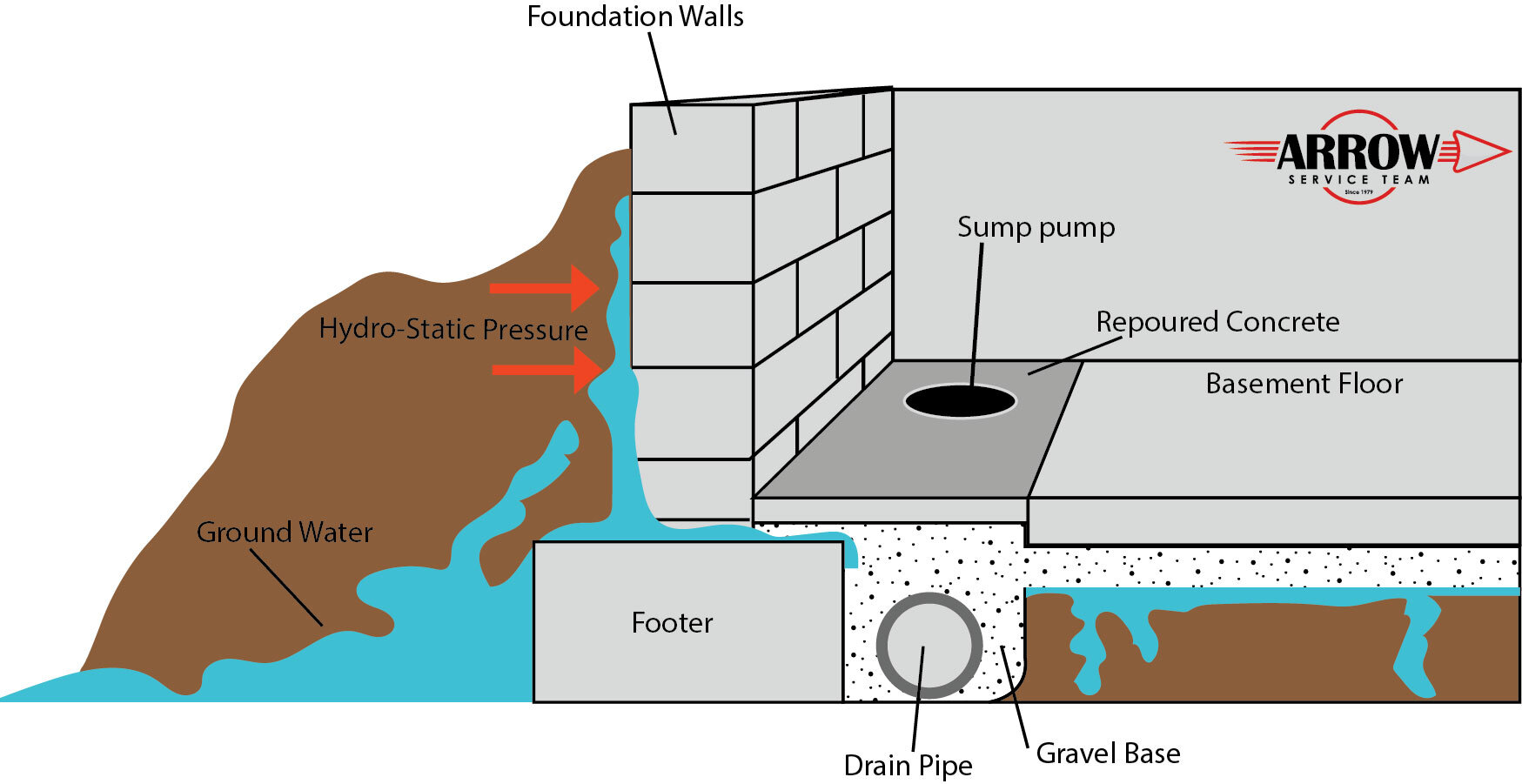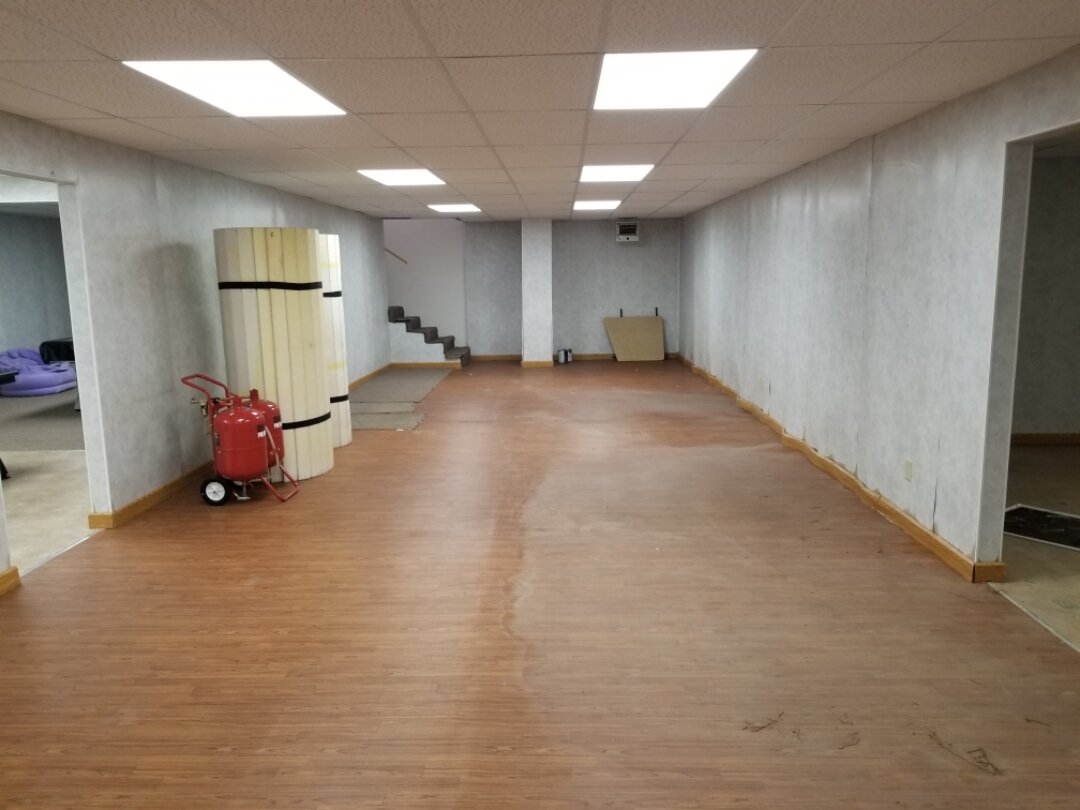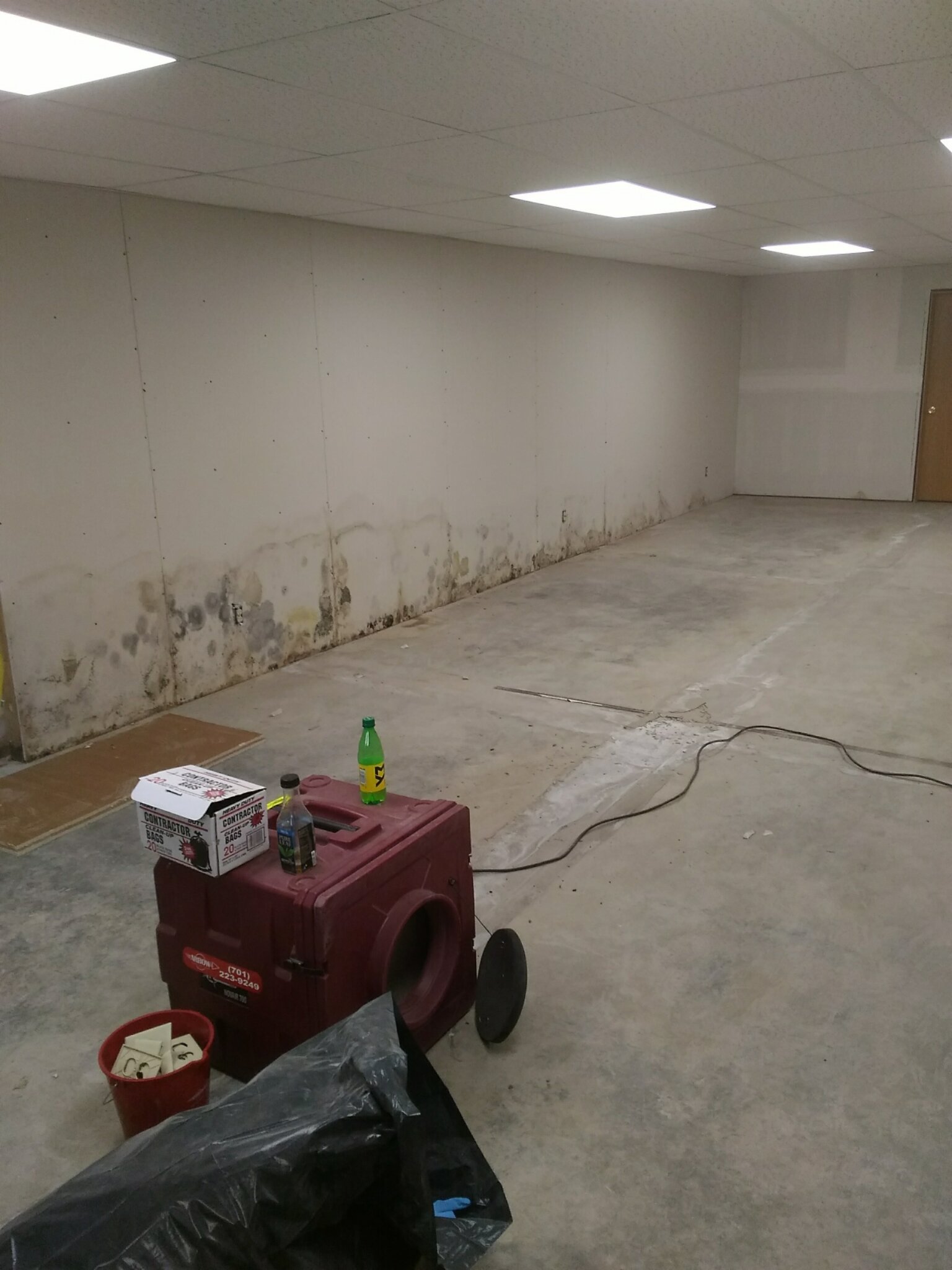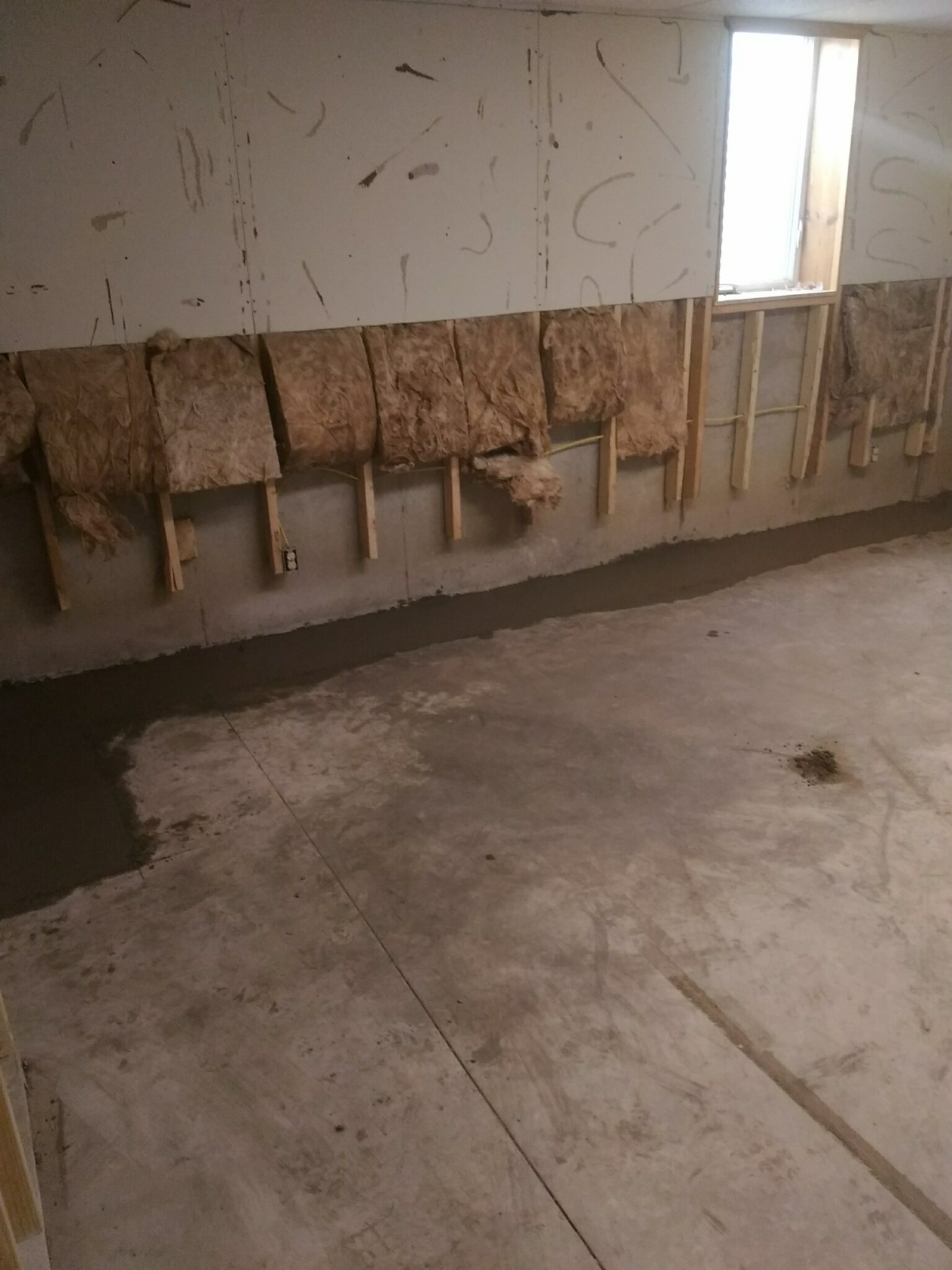Drain Tile Installation | North Dakota
How does an internal drain tile system work?
Prevent Water from Entering your Basement
An Interior Drain Tile System collects the water around your foundation and pumps it out and away from your home. Water gathers in and around your foundation like a basin when it rains. The less dense dirt around the foundation of your house makes it an easier path for water to follow.
High water pressure can also cause seepage through solid concrete. “Hydrostatic Pressure” refers to water pressure and is a significant cause of basement water problems. If the soil around your basement is saturated with water, tens of thousands of pounds of hydrostatic pressure could be pressing against your foundation. As the water gathers around the foundation, it stresses your foundation. An Interior drain tile system is created so the pressure is relieved and the water has a place to go, thus moving it into the tubes and pushing it away from the foundation.
Drain Tile Services We Offer
Basement waterproofing
Sump pump installation
Foundation waterproofing
Interior drainage system
Excrete basement water seepage
Storage basin for water
Pump water away from the foundation
Channel water to sup pump
How an internal drain tile system is constructed?
First, we remove an 18-in. strip of concrete around the foundation walls to expose the footing and underlying dirt.
We dig an 18-in. wide by 16-in. to 24-in. deep trench around the interior perimeter of your basement.
Laying about two inches. Of gravel in the bottom of the trench. We run the perforated drain tile in the trench and push its end through the knockout of the sump basin. Then, we fill the trench and around the bay with more gravel, leaving room for 3 to 4 inches of concrete.
Next, we install the sump pump in the basin and run the discharge pipe outside.
Lastly, we pour the concrete onto the gravel and smooth the floor.
When is an internal drain tile system needed?
Mold and mildew come in various colors, including black, brown, yellow, or green. You should get it tested to know for sure if it is mold.
Excess stagnate moisture in a basement creates a musty smell, which can spread into your belongings stored in the basement and the rest of the home. The scent is not only unpleasant; it can be a sign that your basement is collecting water, which could lead to a big basement waterproofing problem.
Water stains are the first clue to a wet, leaky basement. These stains could be along the walls or floor. These water stains could be caused by something simple like an overflowing laundry tub, or your basement could need waterproofing due to water seeping through the joints where the floor and walls meet.











